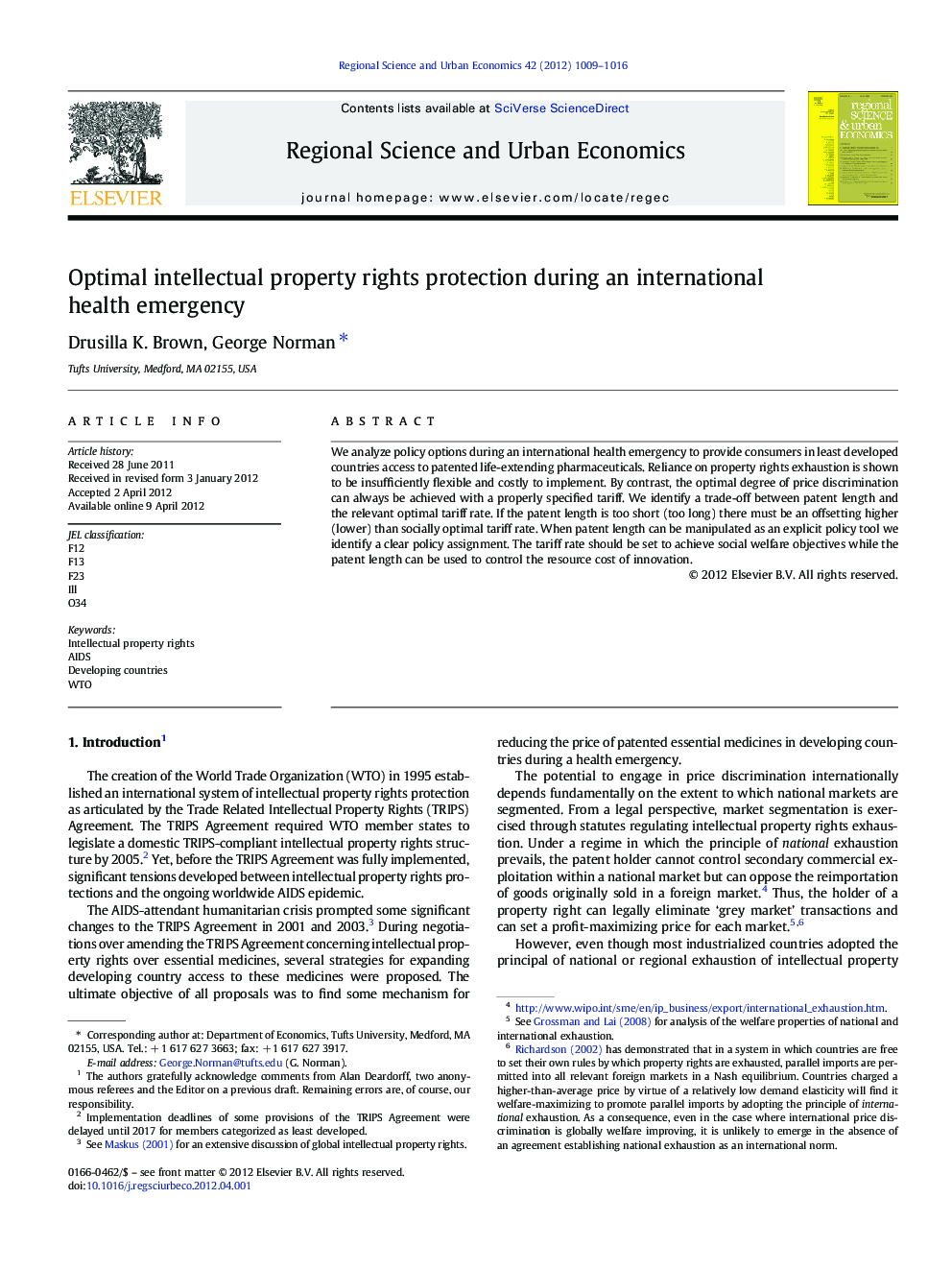| Article ID | Journal | Published Year | Pages | File Type |
|---|---|---|---|---|
| 983825 | Regional Science and Urban Economics | 2012 | 8 Pages |
We analyze policy options during an international health emergency to provide consumers in least developed countries access to patented life-extending pharmaceuticals. Reliance on property rights exhaustion is shown to be insufficiently flexible and costly to implement. By contrast, the optimal degree of price discrimination can always be achieved with a properly specified tariff. We identify a trade-off between patent length and the relevant optimal tariff rate. If the patent length is too short (too long) there must be an offsetting higher (lower) than socially optimal tariff rate. When patent length can be manipulated as an explicit policy tool we identify a clear policy assignment. The tariff rate should be set to achieve social welfare objectives while the patent length can be used to control the resource cost of innovation.
► A properly specified tariff against re-export achieves optimal price dispersion. ► A tariff dominates regional exhaustion to achieve optimal price dispersion. ► There is a trade-off between patent length and the optimal tariff. ► The tariff rate should be set to achieve social welfare objectives. ► Patent length can be used to control the resource cost of innovation.
